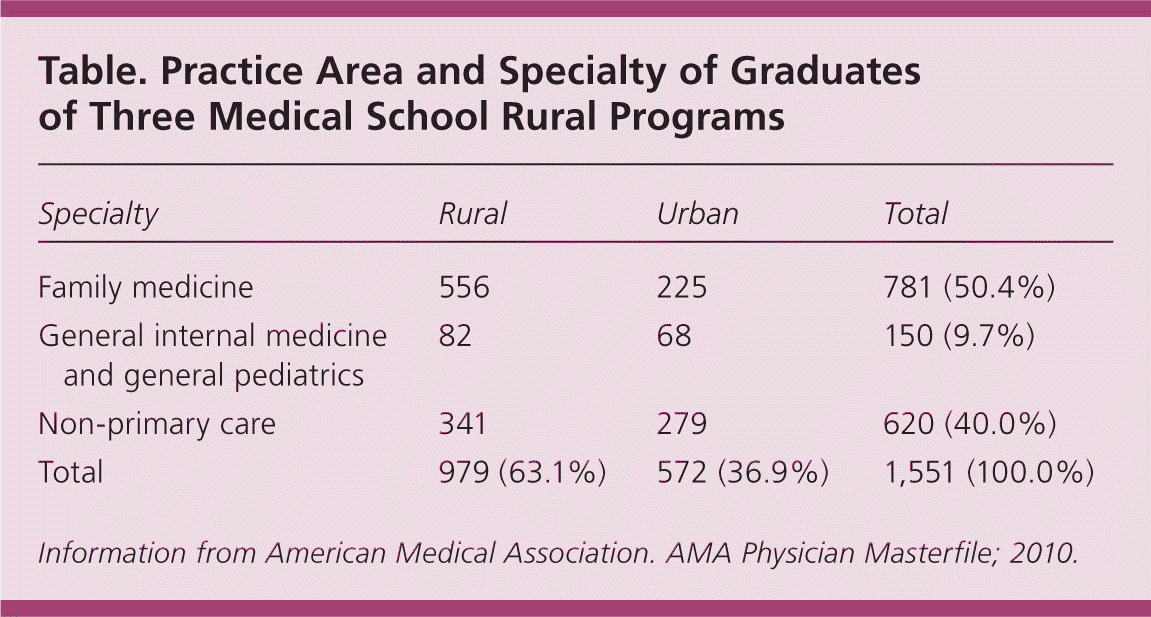
Am Fam Physician. 2011;84(12):1350
Health insurance expansion expected from the Affordable Care Act is likely to exacerbate the long-standing and critical shortage of rural and primary care physicians over the next decade. Comprehensive medical school rural programs, from which most graduates ultimately enter primary care disciplines and serve rural areas, offer policy makers an interesting potential solution.
In an age of medical school expansion and experimentation, few schools offer programs that focus on addressing the growing shortage of primary care physicians in rural areas.1 One such group, the comprehensive medical school rural programs,2 typically offers preferential admission of students likely to practice primary care in rural areas, strong mentoring, and a required rural curriculum.
We used the American Medical Association Physician Masterfile to determine the current location and specialty of graduates of three rural programs from their inception until 2005 (see accompanying table). The programs were Jefferson Medical College's Physician Shortage Area Program, inception 1978; the University of Minnesota Medical School, Duluth, inception 1976; and the University of Illinois College of Medicine at Rockford's Rural Medical Education Program, inception 1997.2 Of 1,551 graduates from these three programs, 63.1% were practicing in a rural area in 2010 (according to the Rural Urban Density Typology 3), and 60.0% were practicing primary care (family medicine, general internal medicine, or general pediatrics), with most practicing family medicine (50.4%). Overall, 82.0% of graduates from the three rural programs were practicing either in a rural area or in primary care, and 41.1% did both. In addition, 61.6% were practicing in the state of their medical school. Ranges of outcomes for the rural programs were similar, with 45.0% to 76.4% of graduates practicing in a rural area, 58.7% to 71.7% practicing primary care, and 76.2% to 89.6% in either a rural area or in primary care. Among graduates who did not go into primary care, 55% were practicing in a rural area.

| Specialty | Rural | Urban | Total |
|---|---|---|---|
| Family medicine | 556 | 225 | 781 (50.4%) |
| General internal medicine and general pediatrics | 82 | 68 | 150 (9.7%) |
| Non-primary care | 341 | 279 | 620 (40.0%) |
| Total | 979 (63.1%) | 572 (36.9%) | 1,551 (100.0%) |
Given that only one-third of U.S. medical school graduates typically choose primary care1 and that 11% practice in rural areas,4 these rural programs almost double the percentage of primary care graduates and increase rural physicians almost sixfold. These findings suggest that expansion of comprehensive medical school rural programs may represent an effective option for increasing the supply of rural and primary care physicians.
